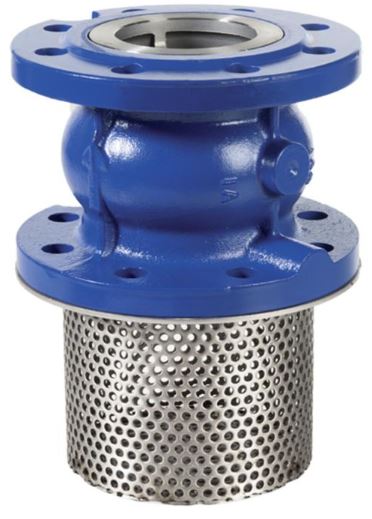Introduction:
In pumping systems, foot valves play a crucial role in ensuring efficient and reliable operation. Often overlooked, these unassuming devices are responsible for maintaining prime, preventing backflow, and protecting pumps from damage. In this blog post, we will delve into the importance of foot valves, their components, and their applications in various industries.
What is a Foot Valve?
A foot valve is a type of check valve that is typically installed at the bottom of a suction line in a pumping system. It allows fluid to flow into the pump while preventing it from flowing back when the pump is not in operation. The valve's name is derived from its distinctive shape, resembling a foot with a strainer-like opening.
Components and Working Principle:
A typical foot valve consists of several key components, including a body, a strainer or screen, a check valve mechanism, and a sealing element. The strainer or screen prevents debris or large particles from entering the pumping system, ensuring smooth operation and reducing the risk of clogging. The check valve mechanism allows fluid to flow in one direction while preventing backflow. The sealing element ensures a tight seal, preventing leakage.
When the pump is in operation, the foot valve's check valve mechanism opens, allowing the fluid to be drawn into the pump. Once the pump is turned off, the check valve closes, preventing the fluid from flowing back down the suction line. This maintains the pump's prime, ensuring it is ready for the next startup without the need for manual priming.
Applications in Various Industries:
Foot valves find wide-ranging applications in different industries where pumping systems are utilized. Some common applications include:
Agriculture: Foot valves are used in irrigation systems to prevent water from flowing back and losing prime, ensuring efficient water supply to crops.
Municipal Water Systems: Foot valves are employed in water treatment plants, wastewater pumping stations, and distribution systems to maintain prime and prevent backflow, safeguarding the integrity of the system.
Industrial Processes: Foot valves are used in various industrial processes, such as chemical processing, oil refining, and mining, to ensure uninterrupted fluid flow and protect equipment from damage.
Maintenance and Considerations:
Proper maintenance of foot valves is essential for their optimal performance. Regular inspection and cleaning of the strainer or screen prevent clogging and maintain efficient flow. Additionally, checking the sealing element for wear or damage and ensuring proper alignment of the check valve mechanism are crucial for preventing leakage and maintaining the valve's integrity.
When selecting a foot valve, considerations such as the flow rate, pressure rating, and compatibility with the fluid being pumped should be taken into account. Consulting with experts or manufacturers can help in choosing the right foot valve for specific applications.
Conclusion:
Foot valves may be small in size, but their significance in pumping systems cannot be overstated. From maintaining prime to preventing backflow, these valves play a vital role in ensuring the efficiency, reliability, and longevity of pumping operations across various industries. Understanding their components, working principle, and maintenance requirements can help optimize their performance and contribute to the smooth operation of pumping systems.
Whether it's in agriculture, municipal water systems, or industrial processes, foot valves continue to be indispensable components, silently working to keep pumps running smoothly and effectively.

What is Foot Valve ?